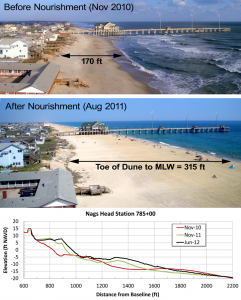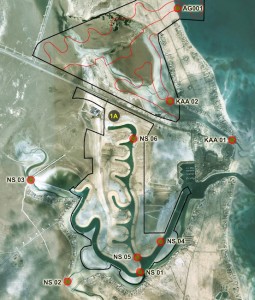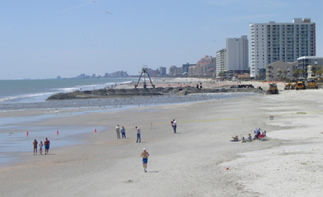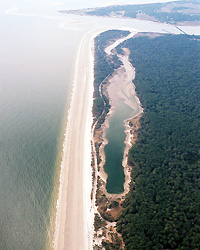
Hunting Island before nourishment, Feb 2006
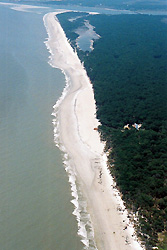
Hunting Island after nourishment, Jun 2006
Hunting Island has been a poster beach for opponents of nourishment because of the frequency and number of projects attempted. It is one of the places where one can truly say “this project will only last about three years.” But after all, should more longevity be expected for a beach that has lost up to 25 feet per year (ft/yr) since the 1940s?
Hunting Island’s erosion rate is ten times faster than Myrtle Beach’s and much of South Carolina’s developed coast. For years, it was the only beach in South Carolina receiving regular infusions of sand. Eight projects in 38 years added nearly 5.5 million cubic yards. Yet even with all this sand concentrated along the 4-mile-long island, today’s shoreline is hundreds of feet landward of the 1960 foredune.
In 2006 and 2007 CSE assisted SC Department of Parks and Recreation in the design and construction management of a 644,222 cy nourishment project, the eighth beachfill along Hunting Island. The project included construction of six steel sheet pile groins extending ~450 ft across the intertidal beach. The groins, spaced 1,200 ft apart, were designed to stabilize three segments of the island and maintain safe beaches for swimming. Away from the groin clusters, the shoreline was expected to continue eroding and retain its characteristic “boneyard” beach of dead trees in the surf.
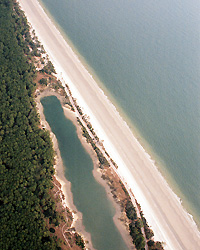
Hunting Island before nourishment, Feb 2006
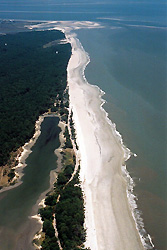
Hunting Island after nourishment, Jun 2006
Five years of post-project monitoring indicate the groins have retained sand in the primary recreation areas of the campground, North Beach at the lighthouse, and South Beach near the middle of the island. Other areas, including the south spit residential reache remain highly erosional.
For more information on the project design, construction and performance contact CSE and request a personal copy of Traynum et al 2010, Construction and performance of six template groins at Hunting Island, South Carolina. Shore & Beach Vol. 78(3), pp 21-32.

